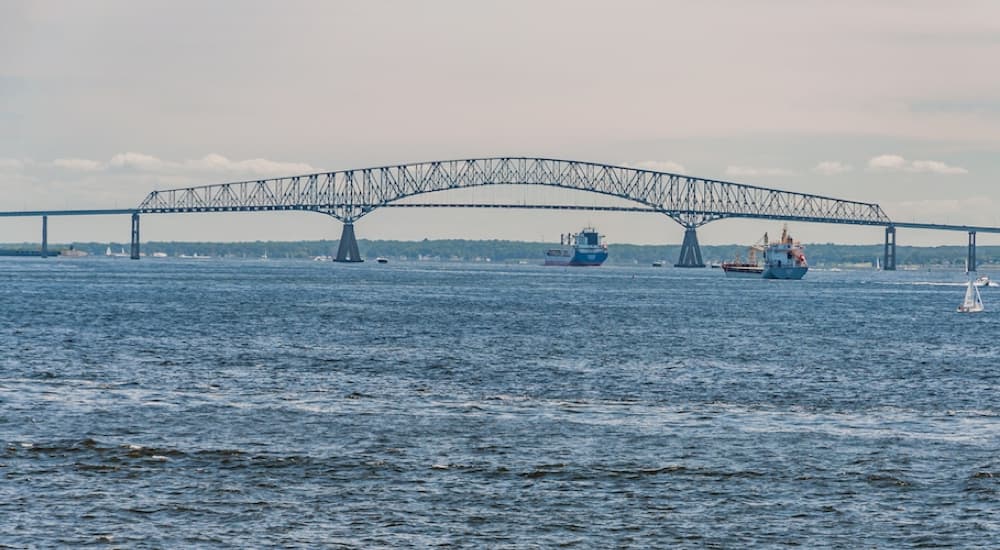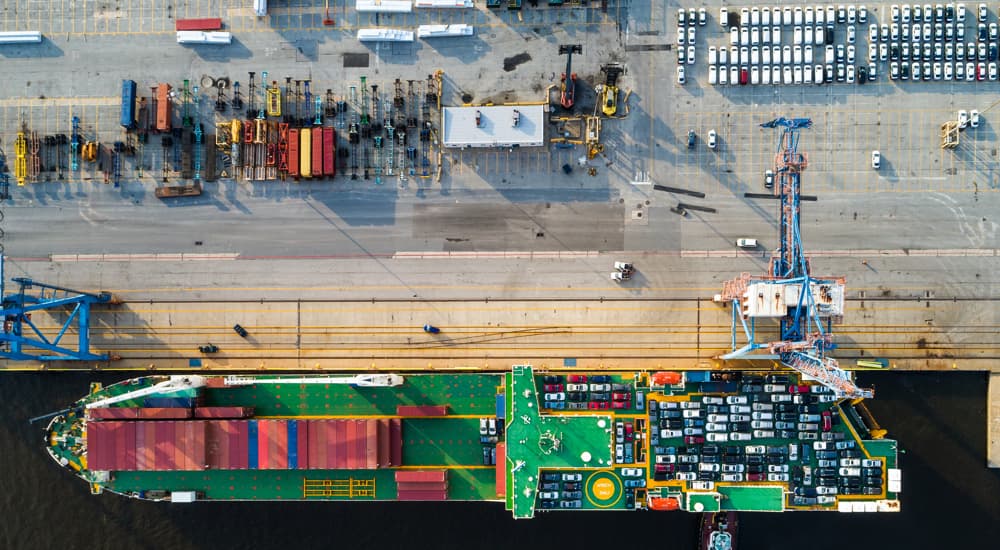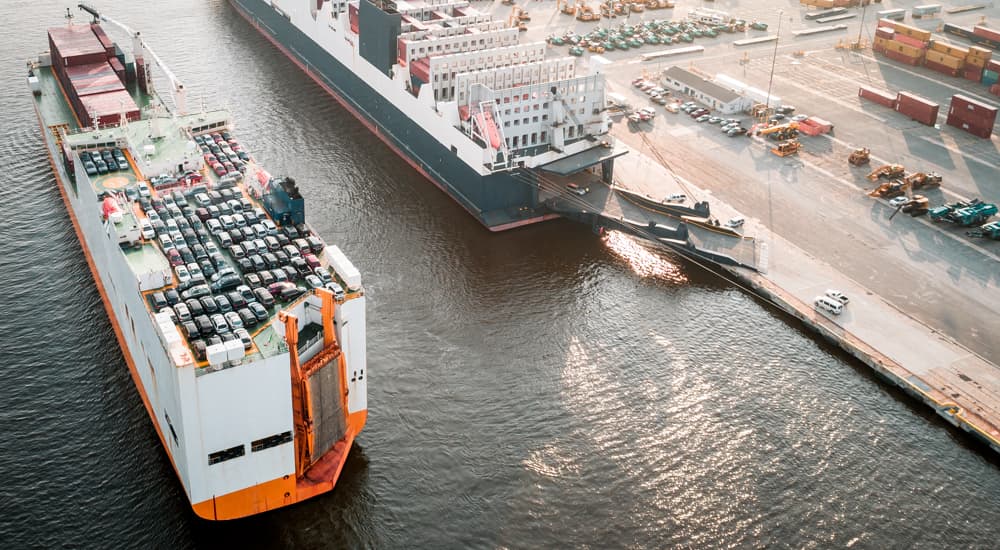When the 300-meter container ship MV Dali collided with the Francis Scott Key Bridge in Baltimore early on March 26, it seized headlines across the nation. It was a shocking human tragedy, with six construction workers losing their lives when the bridge collapsed. As the full details of the incident emerged, it also became clear that this unfortunate accident has the potential to further shake an automotive market that is only just recovering from the effects of the pandemic and resulting chip shortage. Baltimore is America’s busiest port when it comes to car imports and exports, and the collapsed bridge has blocked all traffic until it can be removed. Both foreign and domestic car manufacturers are currently scrambling to reroute shipments, but we can expect delays and possibly shortages, potentially for months to come, while supply lines shake themselves out.
What Sort of Disruption Can We Expect?
How big of a disruption can we expect? It’s difficult to say for sure, but it’s hard to overstate the importance of the Port of Baltimore in the automotive industry. To give an idea of the sheer scale, 2023 alone saw some 850,000 vehicles worth $22.5 billion pass through the port. That represents a full 16% of all American car imports by sea and 11% of all car imports total, including overland imports from Mexico and Canada. The relatively small difference between these two numbers demonstrates the importance of maritime trade, even for nations that share land borders. Shipping is by far the most economical way to move large cargoes over long distances, and no less than 18% of the vehicles imported through the Port of Baltimore are coming from Mexico, where many domestic brands have factories.
The largest share of Baltimore automobile imports—a full 24%—came across the Atlantic from Germany. Since the German brands represent a relatively small portion of the American market, that would suggest that anyone on the East Coast shopping for a German vehicle such as BMW or Mercedes should brace themselves for significant delays and shortages. The UK, Italy, and Sweden also place high on the list considering their relative shares of the market, so fans of brands such as MINI, Alfa Romeo, and Volvo should also prepare themselves. Even the Japanese brands will likely be affected, though possibly to a lesser extent. Some 18% of Baltimore imports came from Japan on ships that had passed through the Panama Canal (in this case, the Francis Scott Key Bridge collapse will compound an ongoing shipping crisis caused by a drought in Panama that has seen canal traffic drop by over a third compared to previous years).
The one bright piece of news is that not all of Baltimore’s port facilities are located upriver of the Francis Scott Key Bridge. While the majority of the port has been shut down, there are some areas that can continue to operate, particularly Volkswagen’s large facility near the mouth of the port. If you’re in the market for a VW, Audi, Lamborghini, or Bently, you will probably not be significantly affected, although there could be minor issues as these brands attempt to move their vehicles through the obviously disrupted traffic around the port. Many other automotive brands are also claiming that the effects will be limited, but the veracity of that statement has yet to be proven.
A Specialist in Car Imports
Manufacturers are already investigating alternate ports. The good news is that Baltimore is not the only port handling automotive imports on the East Coast. The bad news is that it is by far the largest. The other major ports for automotive imports that will have to take up the slack include the Port of Brunswick in Georgia and the Port of Newark in New Jersey. However, those two ports combined handled about 20% of automotive imports last year, so they will likely be overwhelmed by the amount of traffic being diverted from Baltimore. The Port of Jacksonville in Florida is another candidate to take up the slack, but it is further away and handles less automotive traffic than Brunswick or Newark. The additional trains and trucks needed to transport cars from these ports longer distances to their final destinations on dealership lots will create additional inefficiencies in the supply chains and further disrupt markets.
It is important to focus on the automotive capacity of ports and not their total capacity when considering the ramifications of the Francis Scott Key Bridge collapse because shipping cars requires specialized infrastructure and personnel. Manufacturers transport cars on special “ro-ro” (roll-on/roll-off) ships that can fit over 7,000 vehicles and measure nearly three football fields in length (which is actually slightly smaller than the container ship that hit the bridge in Baltimore). As the name implies, cars are driven on and off these ro-ro ships under their own power, which requires a large number of trained drivers who can efficiently maneuver cars in tight spaces without damaging them. It also requires large spaces to store the huge numbers of vehicles that can be unloaded from ro-ro ships while they wait for transportation to dealerships (Baltimore offers over 400 acres of parking for unloaded vehicles).
The Port of Baltimore actually became the largest automotive import location in the country largely because of its skilled port workers and unique QCHAT initiative that works to improve the quality of cargo handling, taking the title from the Port of Brunswick back in 2015. Every year, the port hosts a “Ro/Ro Rodeo” event to train workers on how to quickly and carefully unload cars. Baltimore is also home to many supporting businesses that assist the automotive import industry, including processing specialists who will inspect, repair, and even modify vehicles with factory upgrades as they are unloaded. This supporting infrastructure took Baltimore years to develop as it worked to become the largest automotive port in the country and will be difficult to replicate at other ports on short notice.
When Will Baltimore Be Back in Business?
The single largest factor in the disruption to car imports will be how long Baltimore is out of commission. While other ports like Brunswick and Newark will be able to take up some of the slack in the short term, they simply cannot replace the Port of Baltimore without years of work expanding their facilities and workforces. Unfortunately, it’s looking like clearing the shipping channel and getting the entire port up and running again is going to be a long-term project. Some estimates are already predicting that it will take upwards of three months to clear away the wreckage of the bridge.
In order to address the situation, the US Army Corps of Engineers has already mobilized 1,100 specialists to assist in getting the port operational as quickly as possible. This significant Federal and military response could help shorten the time frame, but the Port of Baltimore will take at least weeks to clear. Further, as we learned from the pandemic, disruptions can continue long after the root problem has been addressed as supply chains slowly return to normal operations. For now, we can only wait to see how large the market disruptions will be and how quickly the situation can be resolved.






